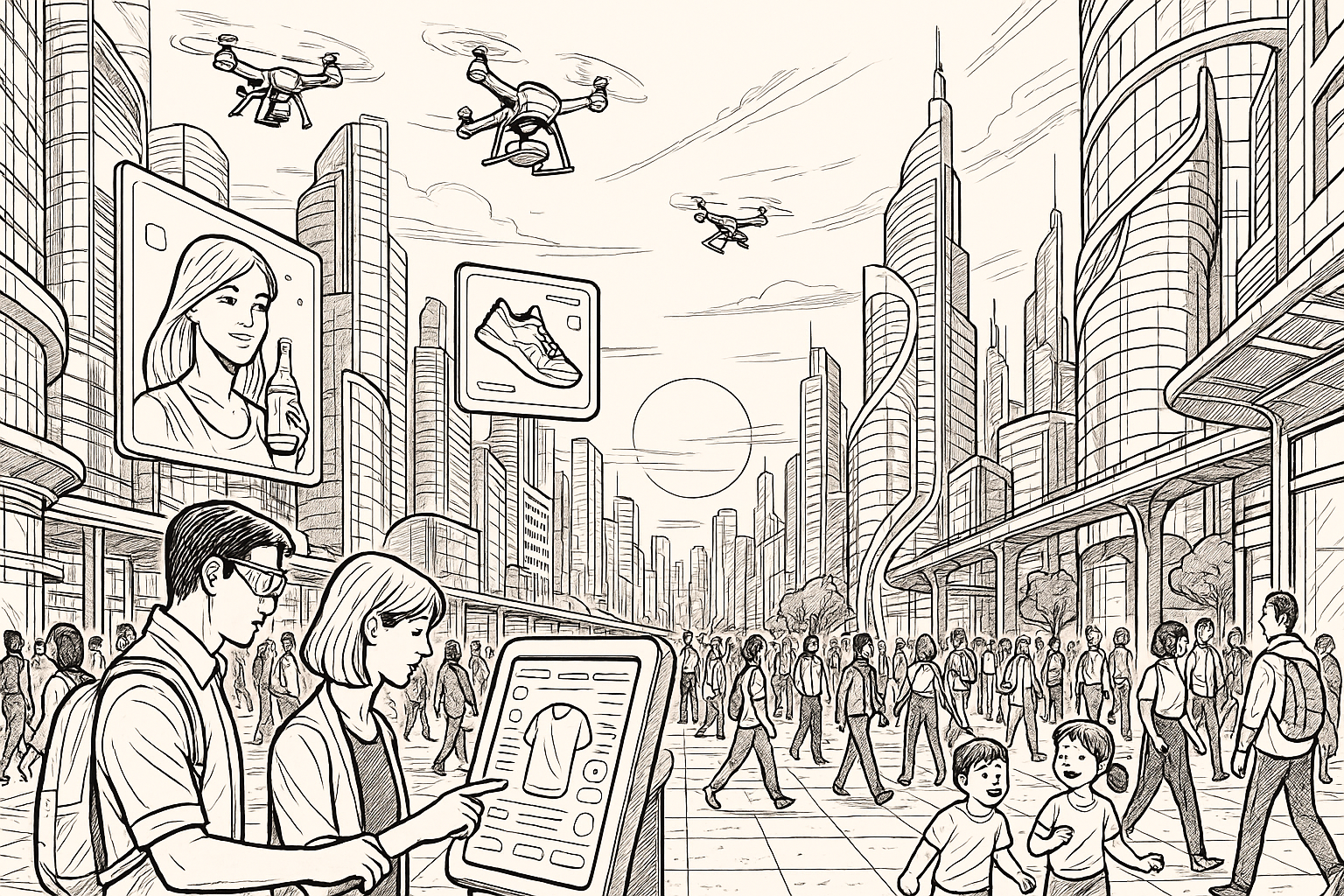There was a time when marketing automation felt revolutionary. We built nurture tracks, scored...
The Future of Marketing Was Written Decades Ago
Historical fiction, dystopian novels, science fiction—I devour them all. If Netflix drops a new period drama, I’m the first to hit play. Part of the appeal is imagining how I’d navigate those worlds. If I were crossing the Great Plains in a covered wagon, what role would I play? If I lived through World War II, would I be on the front lines, in a factory, or quietly passing coded messages under everyone’s nose?
Historical fiction lets you explore the past, with all its unique rules, risks, and opportunities. You imagine how you’d adapt if you were dropped into that world.
Futuristic and dystopian fiction does the same thing—but in reverse. It asks you to imagine a better future… and then shows you what happens when it goes wrong. Somewhere between utopia and dystopia, the human condition takes over. Every perfect system sprouts cracks.
And here’s where the marketer in me wakes up. Because so many of the “far-future” worlds I’ve read about or watched on screen aren’t so far away anymore.
The Minority Report Moment
Take Minority Report (2002).
The film is best known for its “pre-crime” premise—arresting people before they commit a crime. But there’s another scene that’s stuck in my head for years.
Tom Cruise's character walks into a store at the mall. Instantly, his retina is scanned (IYKYK). Personalized ads in holographic form call out to him, referencing "his" last purchase:
When the movie came out, that level of personalization felt like science fiction.
Today, we can do it without the retina scan. Between loyalty programs, device IDs, purchase histories, and cookies (for now), brands can know precisely who you are, what you like, and what you bought last Tuesday. The technology isn’t hypothetical. It’s here.
Which raises the question: how many of today’s marketing “innovations” were first imagined in fiction? And what lessons—or warnings—should we take from that?
Fiction as a Prototype Lab
Storytellers, whether they imagine the past in historical fiction or the future in science fiction, have the power to shape invention. Their worlds spark our imagination and inspire us to create a better future.
In historical fiction, we see technologies and systems at their inception—railroads connecting coasts, telegrams shrinking distances, and printing presses spreading ideas. In science fiction, we see their imagined descendants, warp drives, instant holograms, and mind-to-mind communication.
The gadgets and concepts dreamed up in fiction have a habit of becoming real (Smithsonian: Ten Inventions Inspired by Science Fiction):
- Star Trek’s communicators → flip phones.
- Back to the Future II’s video calls → FaceTime.
- 1984’s telescreens → the smart TV in your living room.
- Her’s AI companion →… well, ChatGPT and beyond.
These ideas didn’t just predict technology. They planted seeds in the minds of inventors, engineers, and yes, marketers.
The Utopia/Dystopia Paradox
The word “dystopia” comes from the opposite of “utopia”—the imagined perfect society. Most dystopias begin with the pursuit of something better: greater safety, increased efficiency, and greater equality. The problem is, the same systems that enable those gains also create the potential for abuse.
In marketing, the same tension exists.
Personalization can feel like service
… or surveillance.
Just like convenience can feel like magic… or manipulation.
As technology advances, marketers are shaping the way people experience the world—often without realizing the extent of the power they wield. This power comes with ethical responsibilities, and fiction can serve as a guide to navigate our future.
Mining Fiction for Marketing’s Future
So here’s the thought experiment:
Instead of only tracking emerging tech trends, what if marketers combed through both historical and science fiction for inspiration and caution?
-
What tools from history or fiction could genuinely make customers’ lives better?
-
What “perfect systems” in these stories eventually collapsed—and why?
-
How can we design for the benefit without recreating the downfall?
Fiction is a guide to potential pitfalls. It shows us where innovation can lead, and where the sharp turns and dead ends might hide. If we can learn from these cautionary tales, we can navigate the future of marketing more wisely.
A Shared World
Whether I’m watching a WWII period drama or a futuristic dystopia, what draws me in is the same: they’re both thought experiments. They force you to imagine how people adapt, innovate, and survive when the rules of the world are different.
In marketing, we are all part of the same thought experiment. Our choices and strategies help shape the future of marketing, and ultimately, the world we live in. It’s a shared responsibility, and the question is: which future will we choose?
.png?width=267&height=52&name=Jen_Spencer_Strategy_Logos_Light-Long%201%20(1).png)



